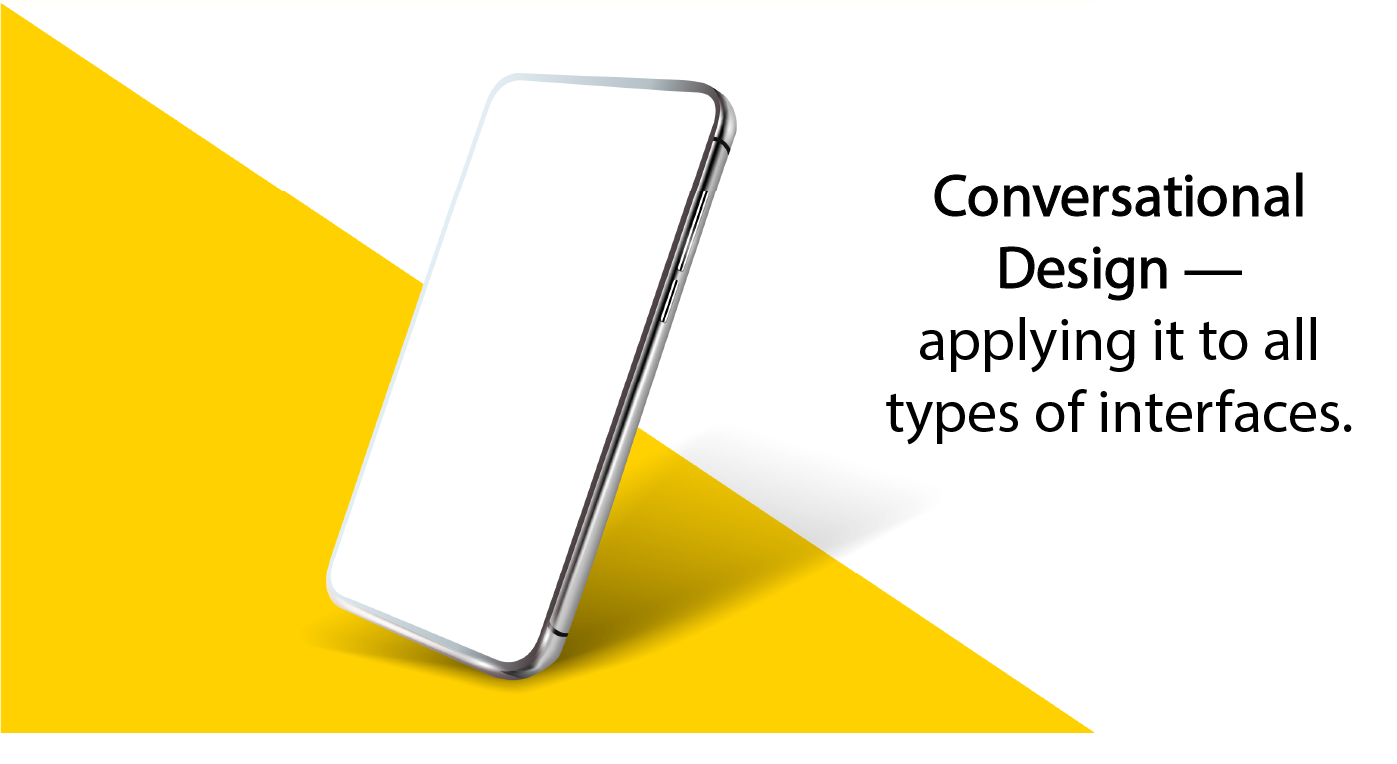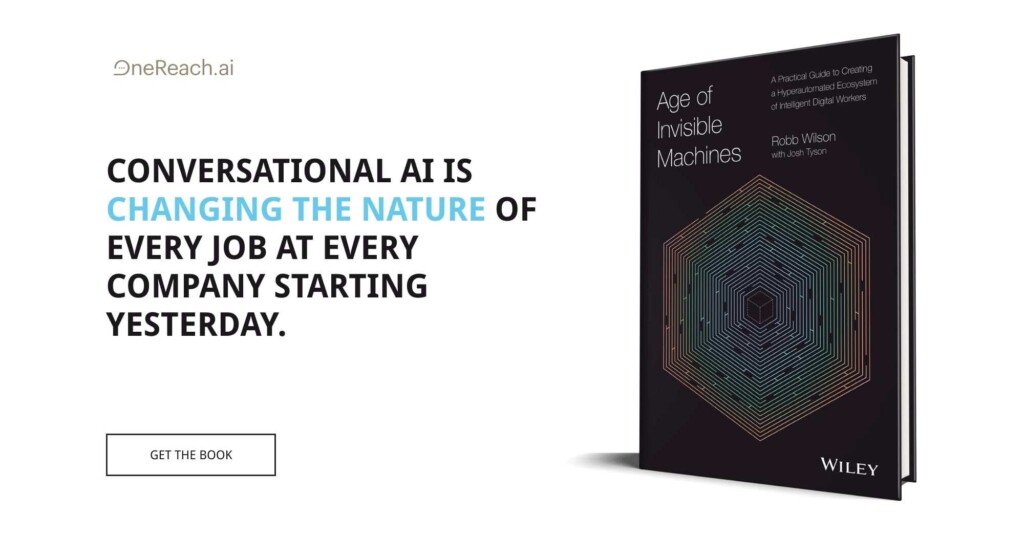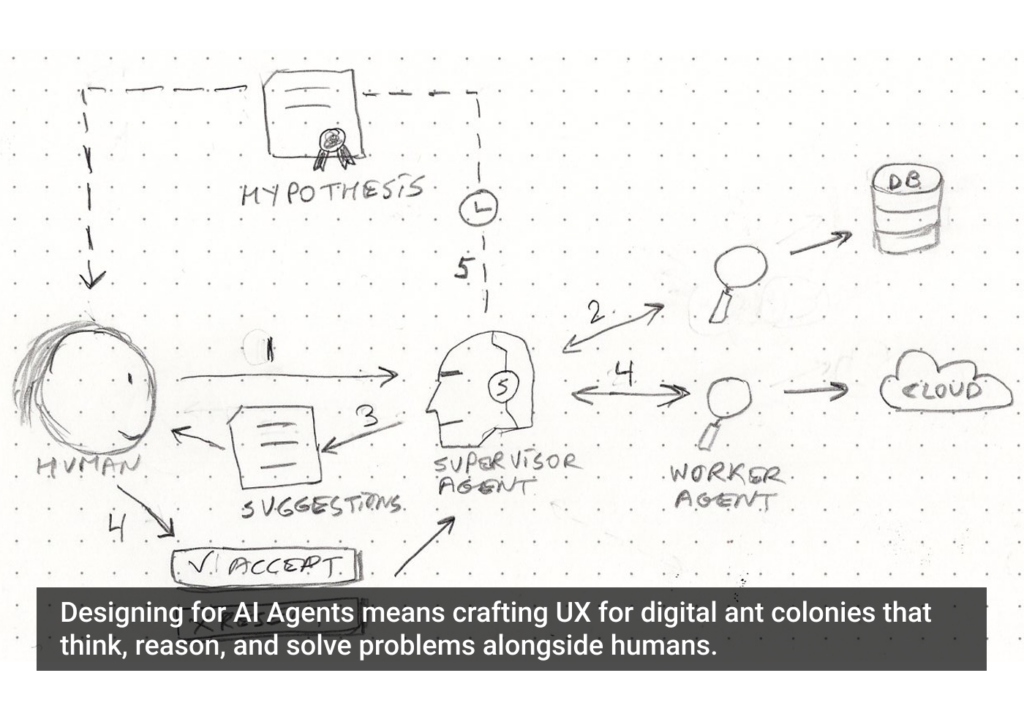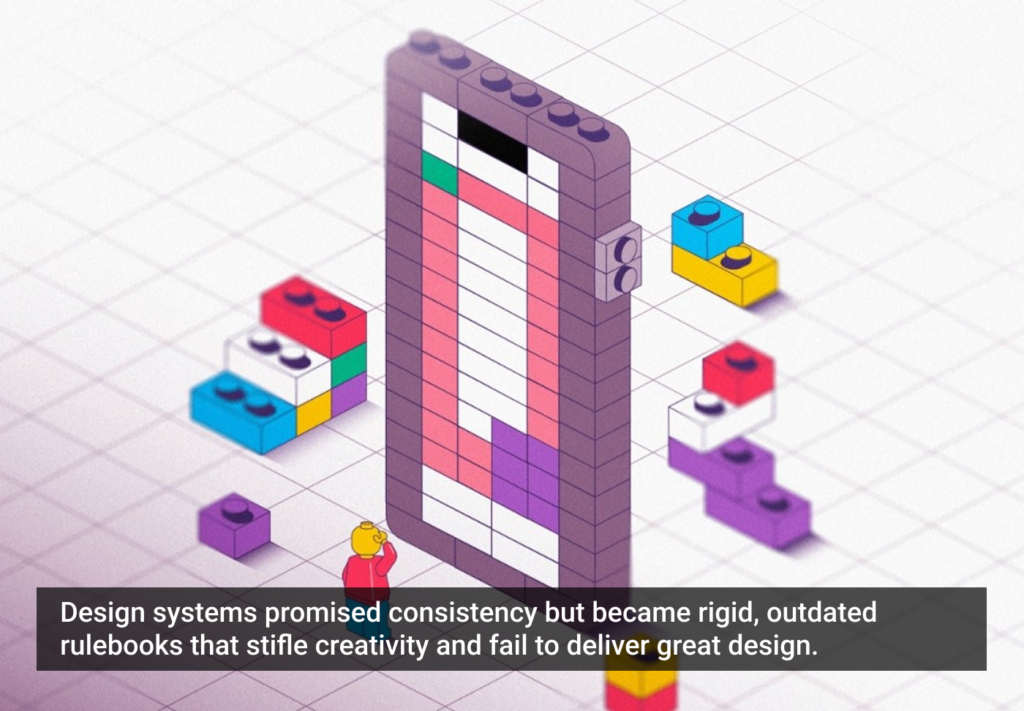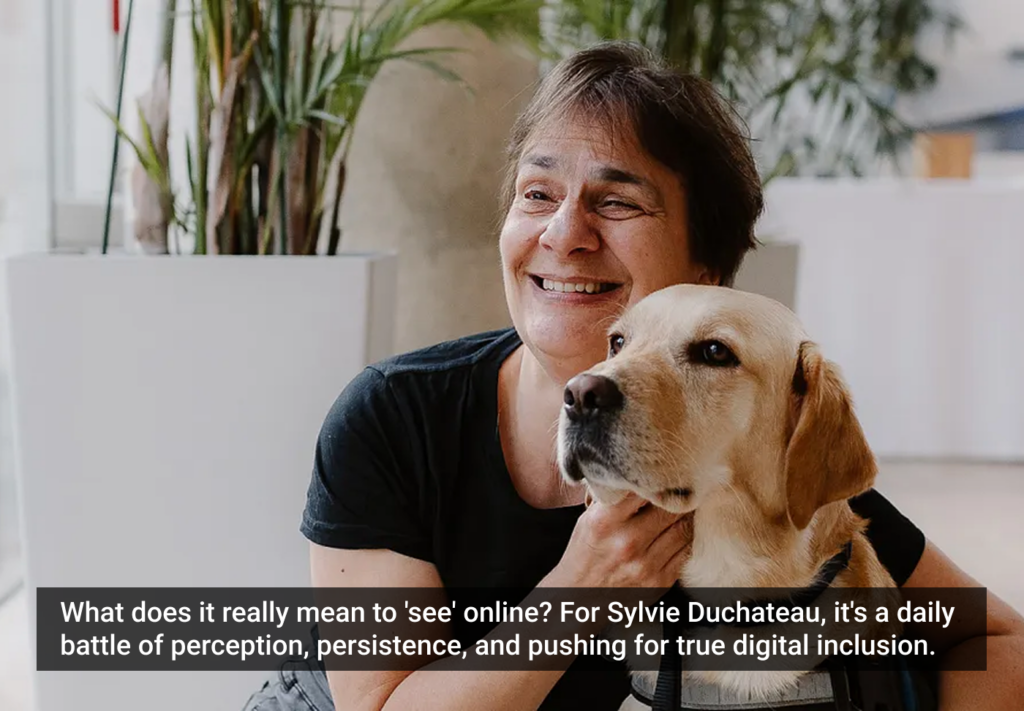We live in an environment where interfaces are everywhere. For most of us, phones, watches, tablets, laptops, kiosks, payment systems, and televisions are all huge parts of our daily lives. And these are all predominantly visual interfaces only. Voice interfaces like Alexa, Siri and Cortana are also starting to be less of a novelty and more of a normal part of our lives. There are physical interfaces we interact with, and we are even starting to see sensory devices emerging. For instance, there already exist alarm clocks that allow you to wake up to the smell of fresh coffee, and haptic gloves that let you actually feel what you see in Virtual Reality.
What all types of interfaces have in common, is that they are used, in part or entirely, by humans. That’s why we refer to them as user interfaces, and why the field of User eXperience (UX) exists; to give focus to human users and their experience when using and designing an interface.
Now, if interfaces are such an integral part of our everyday lives, it’s fair to say that these interfaces should, at the very least, be easy to use. Could you imagine a day where all you did was interact with interfaces that were difficult to use? Red wine sales would go through the roof on a day like this! It fascinates me though that there are still so many confusing and frustrating interfaces out there. And even the good ones still commonly contain the occasional confusing interaction here and there. So, why aren’t we designing more consistently easy to use interfaces? While there may be many contributing factors, it’s my belief that as UX designers, we are largely ignoring one of the most fundamental ways that humans are taught to interact with the world: via conversation.
My aim here is to explore how conversation largely dictates how we think, how we communicate, and how we interact with everyone and everything, including interfaces. I’ll also explore some conversational design approaches I use as a UX designer that can provide more ‘natural’ experiences to users of any kinds of interfaces, not just voice and message-based applications.
(Conversation Design exists currently as both a general approach to designing for voice UIs, and a Google-specific approach to designing for Google Assistant. I’d highly recommend taking a look over Google’s guidelines, even if you are not designing for voice as they lay down an excellent foundation for considering any scope of conversational design.)
What is this thing we call conversation?
Most dictionaries define conversation as an informal and verbal interchange of thoughts and ideas using language. I’d like to be bold though and suggest that conversations occur in various ways besides verbally. They can also happen during thoughts and actions. A more general definition might be, where language is used to facilitate back-and-forth communication between two or more parties. With this more general definition we can now include non-verbal use of language, and parties other than humans, in a conversation. Have you ever had a conversation with yourself in your mind? “Don’t eat the pizza! Nah, just eat the pizza, it smells delicious! Yeah, but you’ll regret it. Pfft, I’m eating it!”. The old angel on one shoulder and the devil on the other idea. There is a back and forth of language-based thoughts happening in the mind between the angel and the devil!

Image via Walt Disney Pictures
What about a back and forth communication between a person and a non-human party? For example, a user and a webpage. How does language play a role in this kind of interaction? First we need to look a little deeper into what language means to us.
The importance of language.
For many of us we not only use language to talk, we also think (and even dream) in the language we’re most fluent in. Language provides us with a means to define and comprehend what exists around us. It also helps us understand how we act, how we feel, and how we think. And of course, it provides us with a means for communicating with other people, pets, and computers (when they don’t do what you want them to). Language does a lot!
One of my favourite quotes is by the late philosopher Ludwig Wittgenstein, “the limits of my language mean the limits of my world”. It highlights how dependent we are on using language to understand and interact with our world. To me, it also suggests that language shapes many of our perceptions, thoughts and actions. When we are shopping and see a nice pair of shoes that we like it might be normal to think to ourselves, “How much do they cost?”. Or, in German, “How much costs they?”. Whether we give preference to the object or the verb by saying it first depends on the language. One could argue, given the word order, that in German the cost is more important than the shoes, and in English the shoes are more important than the cost. In either case you’d be considering the cost of the shoes by thinking in words and grammar that you’re familiar with.
Language is a construct that shapes many of our thoughts, and is more precious to us gold. And if Extreme’s hit song “More than words” is anything to go by, language seems to be rivalled only by love! Without language, all of our interactions, thoughts, even our sense of self, would be very different.
Language, communication, action!
First and foremost, communication is the key reason for language existing in the first place. And generally, we are exposed to this practice of communicating our entire lives, starting the day we are born. It’s no wonder then why it can be difficult to engage with someone or something that doesn’t follow the kind of communication we are used to using. For example, if you wanted to frustrate or confuse someone during a conversation you might randomly scatter the word “Honda” throughout the conversation. I’ve been there, it’s annoying! And it’s annoying because it simply doesn’t make any grammatical sense.
When we are trying to process an interaction with a digital system, remembering that we tend to think using language, if that interaction doesn’t follow how we are used to thinking then the experience can be quite confusing. Have you ever thought to yourself “This interaction doesn’t make sense!”, and not been sure why it doesn’t? Let’s consider an example. Say you pick up your phone to check out some event photos your friends posted. You might start by thinking “Which social media app will I look at first?”. If your phone was good at having a conversation with you it might show apps under the title “Frequently used apps”. You might see this and think “Ok, I’ll look at this one first”. This seems like a simple but natural conversation. If the phone was a person the conversation might go like this:
- John Human: “Which social media app should I look at first?”
- Phoney McPhone: “Well, this is the one you look at the most..”
- John Human: “Cool, I’ll look at that then.”
It’s not a super friendly conversation, but it’s natural at least, and easy to follow. What if the conversation went like this though:
- John Human: “Which social media app should I look at first?”
- Phoney McPhone: “Here are ten folders containing apps. Go look.”
- John Human: “Here we go again. Let’s play ‘find the app’ game.”
It’s still an easy to follow conversation, but even less friendly than the previous example.
Consider another conversation:
- John Human: “Hey McPhone, open [favourite social media app]” [tap app icon to open]
- Phoney McPhone: “…” [blank screen]
- John Human: “Hello? Are you there? Are you loading?”
- Phoney McPhone: “…” [blank screen]
- John Human: “Ahh, are you broken?”
- Phoney McPhone: “Here’s all your content!”
- John Human: “Ok, not sure what all that silence was about. But whatevs, moving on.”
This example doesn’t follow a conversational flow that we are used to. Here, John is met with total silence and doesn’t know what is going on. This could be easily fixed by changing the conversation to this:
- John Human: “Hey McPhone, open [favourite social media app]” [tap app icon to open]
- Phoney McPhone: “Hang on, I’m just loading.” [show loading gif]
- John Human: “No problem, I can wait.”
- Phoney McPhone: “Here’s all your content!”
- John Human: “Nice, pizzas 25% off today!.” [sees a tantalising advert]
My main point here is that our brains respond best to interactions that flow like natural conversations. This is because interactions are led by thoughts, and thoughts are largely shaped using language. Language, also, is focussed primarily on communicating, most commonly in the form of conversations. Thus, conversations are our most common means of interacting. And this dependency implies that a good interaction is dependent on a good conversation.
Conversations are a dish best shared.
When with friends, do you typically talk with them, or to them? The best conversations in my experience happen when people talk with each other, when both parties care about each other enough to listen at least as much as they talk. I’m of the opinion that conversations between a user and a system interface are no different in that both parties needs to engage well with the other.
I find it interesting that the field of UX is mainly concerned with empathising with, and catering for, the user but not the system. I mean, sure, we consider the needs and constraints of business, and observe technical limitations, but we don’t typically spend much, if any, time considering what kind of experience we want the system to have. This sounds a bit weird, I know, but consider that in a two-way conversation both the user and system are interacting with each other. And each have an experience that dictates their engagement. How does a system react to users? Is the system friendly? Is it witty? How well does the system know how to converse with humans, or more specifically, to you as an individual? Does the system react according to natural conversational flow when the user interacts with it? Does the system remember previous conversations with the user? I think that UX practice in general could do more to appreciate the system as a key participant in a conversation, and not just as a servant to the user’s wishes.
Google’s Conversation Design Process encourages designers to create a persona for the system to help build trust, and to help facilitate more natural conversations with the user. I think this is a wonderful step towards not only building trust between a system and user, but also in building meaningful relationships between the two.
Sanity-checking existing designs.
One of the ways that I currently use conversational design is when I’m auditing, or sanity-checking, existing interface designs. It works especially well when there are tight time and money constraints in place. What I do first is to look at the user goals and then at the provisions in the interface to help the user achieve their goal. Once I have this information I translate the user’s and system’s interaction into a written english conversation. To understand what the system is saying I look at the content and interactive elements its presenting to the user. To understand what the user might be saying in their minds during the interaction I look at what they are being presented with or asked to do, then I choose a response that is natural and reasonable. This last step is quite subjective as what I deem natural and reasonable might differ from someone else. This is why it’s a step best done with others, and with consideration given to user research including any user personas you have available to you.
The good thing about this approach is that it can quickly uncover unnatural conversations between the user and system, and highlight the areas that should be fixed.
Giving your service a voice of its own.
Ok, you’ve just designed an interface that converses naturally with your user, and it looks pretty swanky too. Sweet! You’ve even given it a name! Let’s say, Samantha. Samantha needs a personality, she needs a voice of her own. Establishing a voice provides consistency, and affects the emotional response we have when conversing. Giving ‘Samantha’ a personality increases the likelihood that the user will connect with ‘her’.
Conversations that are personable, and even unique, are generally more pleasing to us. And establishing a connection with those we converse with makes us want to return for more conversations. Imagine going to a bar where no one was friendly, and they didn’t even know your name!

Image via yourtv.com.au
Style guides are a good way to lay down the various qualities of a system’s voice. They encourage consistency, and provide a baseline for any more advanced personality modelling you might do. For example, establishing rapports, or maturing a system’s voice using AI (human’s grow, so should the systems they use if they want to stay relevant to people they speak to over time). There are some good examples of companies who already invest in style guides for their service’s voice. Facebook does this, as does MailChimp. And many others! Check out MailChimp’s content style guide for voice and tone.
Natural: the new sexy?
How many times have you heard from a manager or a client that they’d like you to design an interface that looks ‘sleek’ or ‘sexy’. How many UX designers are often treated like graphic designers who can also make wireframes? I know from experience, and from many UX designers I’ve spoken with that this still happens a lot. What if though, instead of just pursuing great looking interfaces, we favoured interfaces that are great to have a conversation with? I think it’s fair to say that all good conversations occur naturally, and in a way we can easily respond to.
A natural conversation can be built upon to become fun, inspiring, intriguing, and emotionally evoking. An unnatural conversation, however, usually comes across as confusing, awkward, frustrating, or maybe even concerning. Now ask yourself, would you rather interact with an interface that was lacking visual chic but made total sense and felt comfortable to use? Or would you rather use a sexy, sleek interface that was confusing and frustrating to interact with? While both form and substance are important, form becomes less significant if substance becomes unfavourable. For example, we generally value the quality of the conversations we have with others more than how much we appreciate their looks, right? Consider next time you are reviewing a design, how natural the conversation with the interface feels.
One design to rule them all.
What this article is focussed upon is the idea that behind every good interface, regardless of the type, is a good conversation. If this is true then it stands to reason that if we design the conversation first we can apply it to any kind of interface. By doing this we can more easily unify and combine the experiences of voice UIs and visual UIs. One might call this a conversation-first approach to design. At the moment there are tools to design for voice UIs and separate tools to design for visual UIs. Such a separation of tools, though, makes it difficult to provide any kind of unified experience. Some visual UI tools do incorporate voice design capability (Adobe XD), but it seems more like an add-on than a paradigm shift towards encouraging interface designers to take a more conversational approach to visuals as well as voice. A tool that facilitated a conversation-first approach would be great for not only unifying voice and visual UIs, but also for incorporating more UIs into the mix, like sensory and even physical UIs.
A new UX skill-set.
As we [hopefully] approach a successful widespread commercialisation of Augmented Reality that doesn’t make you look like a kitchen appliance, UX designers may soon be faced with a whole new set of design challenges to face. 3D objects, animations, shaders, sounds, and gamification will all require UX designers to engage in new thinking, training and tools. And conversational design, however it evolves, is no different. Luckily, there already exists a wonderful field of expertise called narrative design. Narrative design describes various different ways to structure stories and incorporate drama into a narrative. Maybe you want to design an interface that encourages the user to complete daily tasks. You might want to perform what’s called an escalation in order to make the user more excited about achieving their daily goals. An example of escalation might look like this:
Non-escalated conversation:
- Appy McAppFace: “You’ve almost completed this task.” [show progress bar]
- John Human: “Cool. Btw, I just made some more progress.” [log progress]
- Appy McAppFace: “You’ve almost completed this task.” [show progress bar a bit further along]
- John Human: “Noted. I might finish that tomorrow.” [continue binge-watching favourite TV show]
Escalated conversation:
- Appy McAppFace: “You’ve almost completed this task.” [show progress bar]
- John Human: “Cool. Btw, I just made some more progress.” [log progress]
- Appy McAppFace: “Nice one! You’re so close to completing this one! You’re almost there!” [show progress bar animating and pulsing towards completion]
- John Human: “I’m so close! I gotta finish this!” [do ‘the thing’ to complete the goal]
In the above example the progress bar animation introduces an escalated sense of drama in the conversation. You might even have an easy-tempo audio track in the background that you change to something more lively when the progress bar animates, just to add some more escalation.
Whether it’s narrative design or another design skillset, each has the ability to enrich the conversation the user and the system have with each other. Hopefully, as UX as an industry matures and as new technology becomes available, we will see UX teams being more diversely skilled, and more tools being made to reflect these diverse skills.
Rounding up
Hopefully, these ideas surrounding conversation-first design have been interesting and useful. I would love to hear your thoughts in the comments. Also, here is a summary of some of the key take-aways from above:
- Review current interfaces by translating the experience into a conversation.
- Take a conversation-first approach to design.
- Create a system persona.
- Establishing a style guide for a system’s voice.
- Learn about narrative design principles, or better still, get a narrative designer on the team.
- Create new tools that help move design towards more natural conversations.
- Keep the conversations natural.
- Be the curator of relationships between user and system.
Onwards and upwards!


